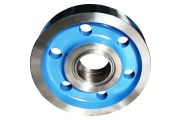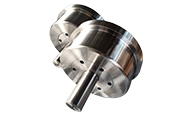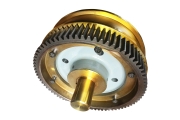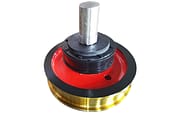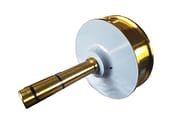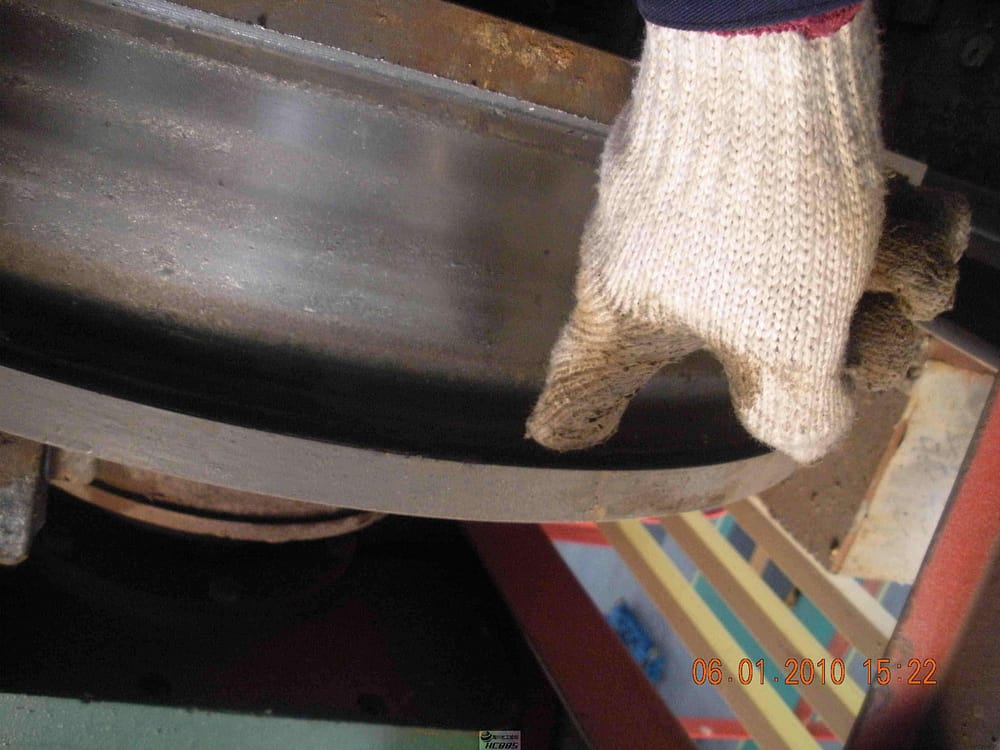
Excessive Friction
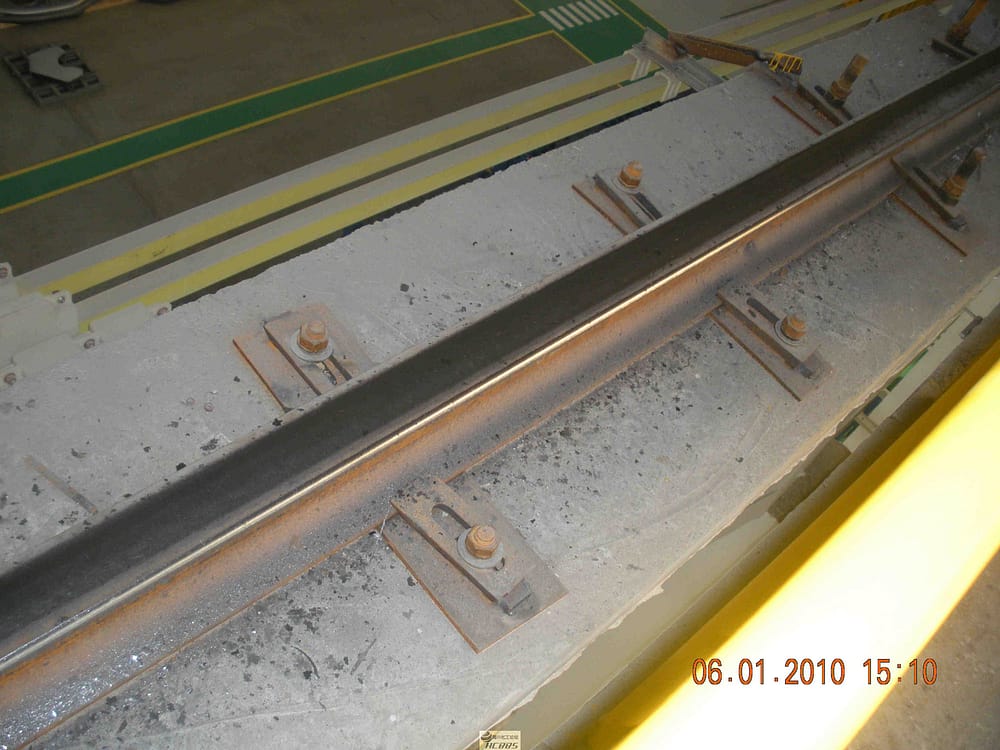
Rail-Gnawing
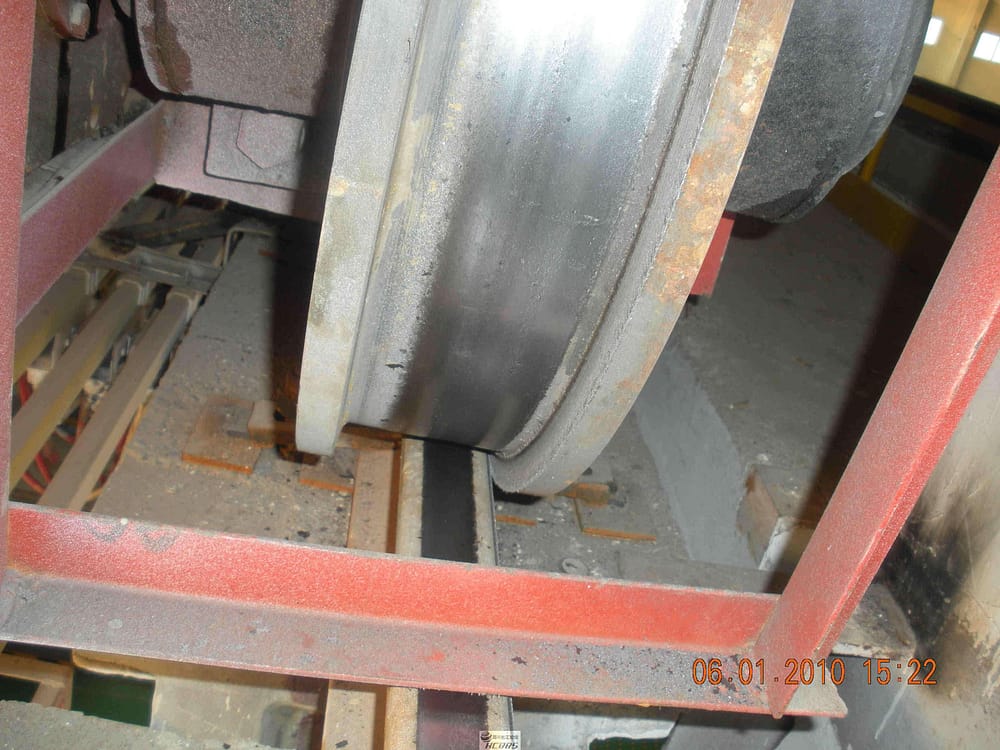
Running Conditions
The optimum running state of the crane is that the side of the track has a clearance of about 20 mm with the wheel flange. The wheel flange is not contacting with the track, and there is no additional resistance when the wheel is running. At this moment, the wear of the wheel and track is minimum.However, in practice, due to manufacturing error and nonstandard installation or other factors may lead to large friction between wheel and the rail.
The cause of crane rail friction is complicated, and it is often caused by multiple reasons, so it is necessary to analyze the cause of the problem step by step and solve the problem one by one.
Unqualified rail girder
The track of the bridge crane is installed on the rail beam, which is generally divided into steel rail beam and concrete rail beam. The steel rail beam is processed in the manufacturing plant and transported to the crane workshop for installation.
Concrete beams are usually casted on site in the construction of crane factory houses. In the process of installation or pouring of supporting rail beams, the construction errors will make it difficult to pass the level and leveling degree of the rails bearing beams at the first time, so the installation process should according to the GB50205-2011 "Code for acceptance of construction quality of steel structure engineering" or GB50204-2002 "Code for acceptance of construction quality of concrete structure engineering" to control the dimention of supporting rail beam. So the crane track should be installed only after the rail girder is adjusted, otherwise it will cause friction.
The unqualified track installation
The difference between the two tracks does not meet the requirements, according to gb/t 10183-2005 "Bridge crane and gantry crane construction and rail installation tolerance ", the limit deviation of the top surface of the track relative to the theoretical height is ±10 mm. Once the height difference between the tracks exceeds this range, the bridge crane may slip laterally during operation and cause the rail friction. This kind of situation needs to adjust the track height difference to solve the track friction problem.
The alignment of track installation is poor, and the maximum allowable deviation in lateral direction is ±10mm. If the lateral deviation is too large, it will cause the crane to destory the rail. This kind of fricton usually occurs on the particular track segment with too large lateral deviation. In this case, the orbit of the part of the straightness over difference should be adjusted and rearranged.
Because the deviation of track span size is too large, the ideal running state of crane is that the track center line and the crane wheel center line are rearranged. There is a gap between the rail side and the wheel flange. It is generally stipulated that when the span of the crane s ≤ 10 m, the deviation of the track span does not exceed ±3 mm, and when the span of the crane s > 10 m, the deviation of the track span is not more than ±3 mm. The track span deviation shall not exceed ±[30.25 × (s -10)] mm; if the track span is too small, the inner wheel rim will destroy the rail, and if the track span is too large, the outer rim of wheel will destroy the rail. The track span needs to be adjusted as a whole until it meets the requirements.
The friction of the track caused by the loosening of the fixed pressure plate of the crane in use, which needs to strengthen the maintenance of the daily equipments, fasten the loose pressure plate, and prevent the friction problem.
Unqualified wheel manufacturing and installation
The two drive wheel groups of cranes are weared by excessive diameter deviation, which is caused by the error of wheel manufacture. Because the diameter of the two drive wheels is different, but the speed of the wheels is the same, the running speed of both sides of the crane is different. After running for a long time, the crane wriggles cased the friction of the rail. This problem needs to be solved by replacing the wheels of the crane.
Crane wheel mounting dimension horizontal deviation is too large, due to the nonstandard wheel installation in the manufacturing and assembly of crane or the deformation of the steel structure of the crane for a long time, the centerline of wheel and track will form an angle in the horizontal direction. When the active wheels are all moving in one direction as well as deviation angle is too large, the deflection of the crane will cause friction of the track. To solve this problem, it is necessary to readjust the wheel position.
Crane wheel mounting dimensions of vertical offset is too large, the ideal state of crane wheel rail contact is in line with the top surface of the wheel rail vertical center angle was 90 degrees, but when the wheel installation is not qualified, the wheel vertical center line will form a track with top surface and the angle is not equal to 90 DEG angle.When the deviation is too large, the area of the contact surface will be smaller. The load distribution on wheels is not uniform, the local pressure is too large, the grinding wheel is not uniform, even caused step surface and then the track will be destroyed.
The drive wheel and the driven wheel are not in a straight line due to the unqualified installation of the ipsilateral wheel. If the crane adopts a four-wheel structure, Then the four groups of wheels will appear parallelogram or ladder shape situation, both of which may lead to the track friction. So we need to adjust the wheel position to ensure the straightness of the front and rear wheels can return to normal operation.
First of all, it will increase the collision friction between the crane wheel and the track, then accelerate the wear of the wheel and track, and reduce the service life of the wheel and track greatly. It will also increase the running resistance of the crane running mechanism. The load of running motor and reducer is greatly increased, and running in this condition for a long time will lead to the damage of running motor and reducer. When the problem of gnawing track occurs, the wheel will collide with the track and produce lateral force. The lateral force is transferred from the corbel to the roof truss of the factory building, and the long running time will reduce the service life of the building. When the problem of gnawing track is long and serious, even the wheel flange of the crane will be completely worn off. The crane runs in the condition of no flange and loses the constraint of horizontal direction. The crane falls off the track and threatens the safety of person and property. Therefore, the problem of gnawing rail is solved. Is the crane maintenance and repair of the heavy work items.
Key words: crane wheel,Technical documentation
